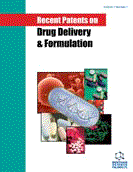Abstract
It has been documented that telomere-associated cellular senescence may contribute to certain age-related disorders, including an increase in cancer incidence, wrinkling and diminished skin elasticity, atherosclerosis, osteoporosis, weight loss, age-related cataract, glaucoma and others. Shorter telomere length in leukocytes was associated crosssectionally with cardiovascular disorders and their risk factors, including pulse pressure and vascular aging, obesity, vascular dementia, diabetes, coronary artery disease, myocardial infarction (although not in all studies), cellular turnover and exposure to oxidative and inflammatory damage in chronic obstructive pulmonary disease.
It has been proposed that telomere length may not be a strong biomarker of survival in older individuals, but it may be an informative biomarker of healthy aging.
The data reveal that telomere dynamics and changes in telomerase activity are consistent elements of cellular alterations associated with changes in proliferative state and in this article these processes are consequently considered as the new therapeutic drug targets for physiological control with advanced drug delivery and nutritional formulations. In particular, the presence of highly specific correlations and early causal relationships between telomere loss in the absence of telomerase activity and replicative senescence or crisis, and from the other side, telomerase reactivation and cell immortality, point to new and important treatment strategies or the therapeutic manipulation during treatment of age related disorders and cancer. Once better controls and therapeutic treatments for aging and age-related disorders are achieved, cellular rejuvenation by manipulating telomeres and enzyme telomerase activity may reduce some of the physiological declines that accompany aging.
In this work, we raise and support a therapeutic concept of using non-hydrolyzed forms of naturally occurring imidazoledipeptide based compounds carnosine and carcinine, making it clinically possible that slowing down the rate of telomere shortening could slow down the human aging process in specific tissues where proliferative senescence is known to occur with the demonstrated evidence of telomere shortening appeared to be a hallmark of oxidative stress and disease.
The preliminary longitudinal studies of elderly individuals suggest that longer telomeres are associated with better survival and an advanced oral nutritional support with non-hydrolyzed carnosine (or carcinine and patented compositions thereof) and patented N-acetylcarnosine lubricant eye drops are useful therapeutic tools of a critical telomere length maintenance that may fundamentally be applied in the treatment of age-related sight-threatening eye disorders, prolong life expectancy, increase survival and chronological age of an organism in health control, smoking behavior and disease.
Keywords: Age-related diseases, carcinine, cumulative oxidative stress, healthy aging, life expectancy, natural imidazolecontaining peptidomimetics, N-acetylcarnosine, non-hydrolyzed carnosine, nutritional support, telomeres and telomerase biology, telomere length protection.
 64
64














